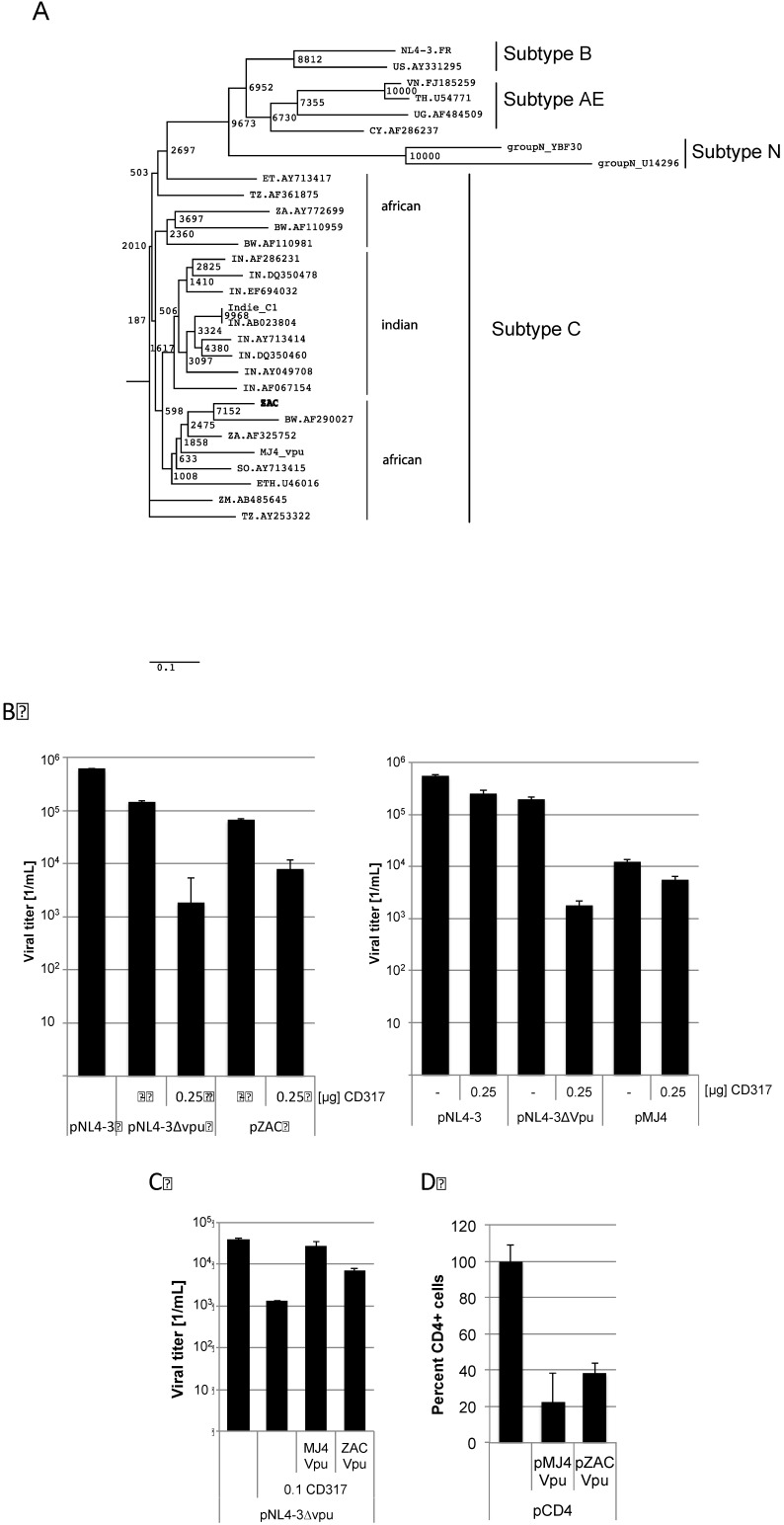Figure 4.
pZAC Vpu is unable to counteract CD317 but down-regulates CD4 expression at the cytoplasmic membrane. (A) Phylogenetic tree of the Vpu amino acid sequences. Evolutionary distances were calculated using the Maximum Composite Likelihood method, with a bootstrap test of 10,000 replicates. The branch scale, indicating the evolutionary distance, is indicated. The African subtypes do not form a unique cluster with the newly described pZAC sequence. Subtypes N, B, and AE were used as out-group. (B) pZAC is not completely able to counteract CD317. HEK 293T cells were co-transfected with pNL4‑3∆vpu, pZAC, or pMJ4 and 0.25 µg of pCD317. Cellular supernatants were titrated on TZM-bl cells and viral titers were determined. Experiments were performed in triplicate. Error bars indicate the standard deviation. (C) The pZAC Vpu is unable to rescue CD317 sensitivity of pNL4-3∆vpu to wild type levels. MJ4 Vpu is significantly better at antagonising CD317 than that of ZAC Vpu. HEK 293T cells were transfected with pNL4-3∆vpu and pZAC vpu or pMJ4 vpu. Viral titers were determined on TZM-bl cells. Bars represent the mean of 3 independent experiments. (D) pZAC and pMJ4 are able to down-regulate CD4 expression in a similar way. HEK 293T cells were cotransfected with the CD4 expression construct pMSCCD4 and pZAC vpu or pMJ4 vpu. CD4 expression was monitored by FACS. CD4 expression of the control without vpu was set to 100%. Bars represent the mean of 3 independent experiments. Error bars indicate the standard deviation.

